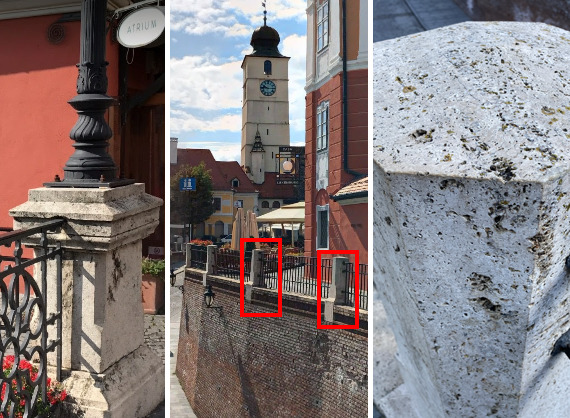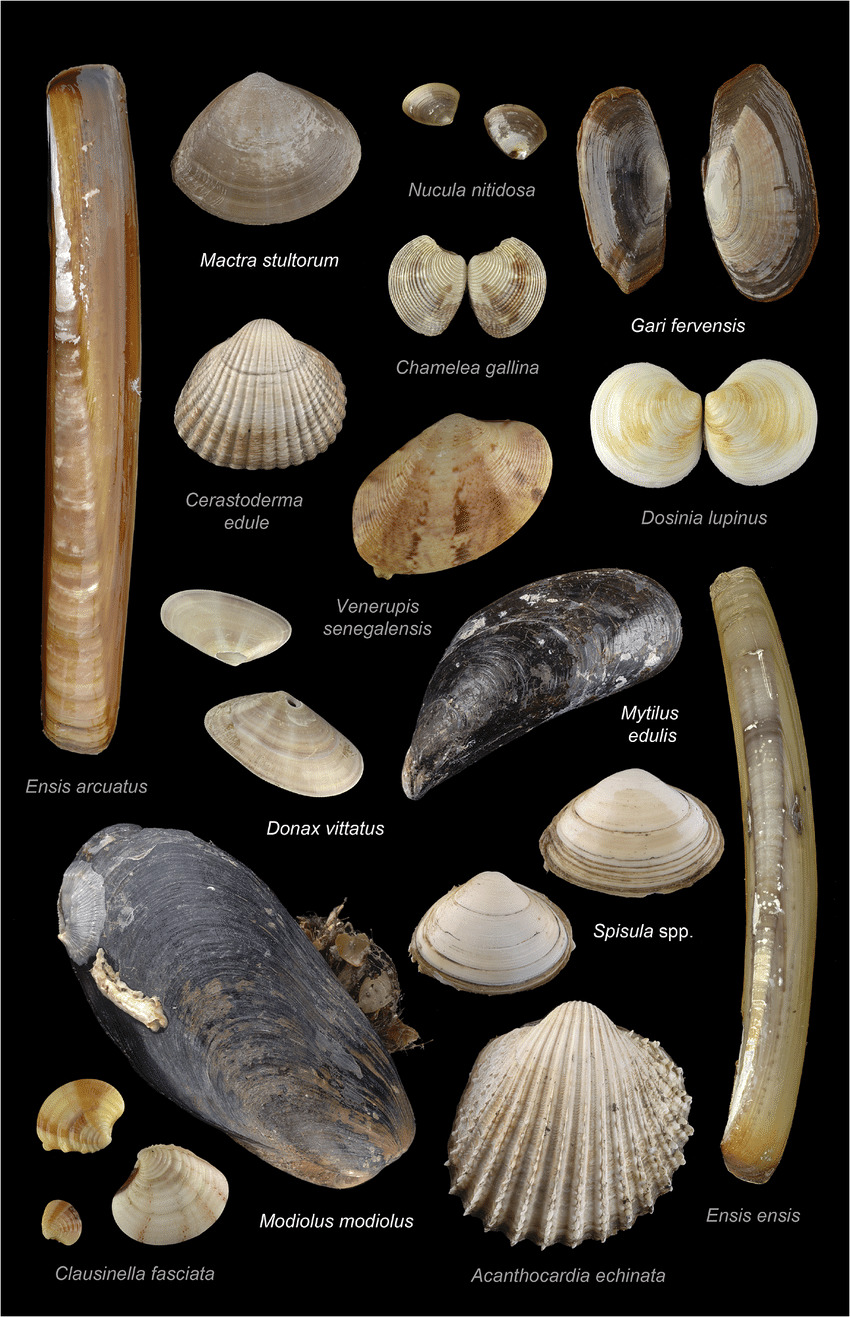 Română
Română
Bine ati venit in Sibiu!
Un oras incarcat de istorie, infiintat de sasi in secolul al XII-lea. Cu atatea lucruri frumoase in imprejur e usor sa trecem cu vederea peste niste lucruri ascunse chiar sub ochii nostri.
Pentru EarthCache-ul de astazi ne vom indrepta atentia in zona Pietei Mici. Bolarzii albi de-o parte si alta a drumului ce urca spre orasul vechi ascund locuitori vechi de milioane de ani.

Daca ne uitam cu atentie vom observa o sumedenie de urme ciudate. Decorativitatea lor provine din numeroase fosile de bivalve numite „rudisti” care au fost complet zdrobite si imprastiate uniform în piatra. Exista chiar si fosile intregi, insa e nevoie de o atentie mult mai mare pentru a le descoperi. Multe monumente si sculpturi sunt realizate din aceasta piatra, deoarece o astfel de varietate este potrivita pentru sculptura.
Bivalvele (lamelibranhii, sau pelecypode) sunt moluste cu o scoica articulata în 2 parți. In prezent, exista aproximativ 10.000 de specii, inclusiv midii, stridii și scoici. Se gasesc pe tot globul, inclusiv la cei doi poli, nord/sud.
Primele bivalve inregistrate datează de la peste 500 milioane in urma. Au fost martore la aparitia si disparitia dinozaurilor si au supravietuit pana in zilele noastre.
Majoritatea bivalvelor se ingroapa in sedimente, unde sunt relativ ferite de prada. Altele zac pe fundul marii sau se ataseaza de pietre sau de alte suprafete dure. Exista specii care pot inota.
Invelisul este compus din carbonat de calciu si este format din două parti, de obicei similare, numite valve. Acestea sunt unite de-a lungul unei margini (linia balamalei) printr-un ligament flexibil care, de obicei, impreună cu „dintii” interblocați pe fiecare dintre valve, formeaza balamaua. Acest aranjament permite deschiderea și inchiderea carcasei fara ca cele două jumatati sa se desprinda. Cochilia este de obicei simetrica bilateral, cu balamaua situata în planul sagital. Dimensiunile cochiliei adulte ale bivalvelor variaza de la fractiuni de milimetru la peste un metru în lungime, dar majoritatea speciilor nu depăsesc 10 cm.

 EarthCache
EarthCache
1. Ce dimensiuni au majoritatea urmelor din piatra?
2. Care ar putea fi motivul pentru care majoritatea fosilelor au fost zdrobite?
3. Cum se apara bivalvele de pradatori?
4. Atasati o poza cu bivalve intregi (in cazul in care nu reusiti sa gasiti atasati o poza de pe podul minciunilor cu vedere spre turnul sfatului).
! log-urile fara poza vor fi sterse !
 English
English
Welcome to Sibiu!
A city full of history, founded by the Saxons in the twelfth century. With so many beautiful things around it is easy to overlook some things hidden right under our eyes.
For today's EarthCache, we will turn our attention to the Small Square area. White boulders on either side of the road leading up to the old town are hiding Sibiu's oldest residents.

If we look closely we will notice a lot of strange traces. Their decorativeness comes from numerous fossil bivalves called “rudists” that were completely crushed and uniformly scattered in the stone. Many monuments and sculptures are made of this stone because such variety is suitable for sculpting and carving.
Bivalves (or lamellibranchs, or pelecypods) are mollusks with an articulated shell in 2 parts. There are currently around 10,000 species including mussels, oysters, and clams.
They are found all over the globe, including the poles.
The first recorded bivalves date back to more than 500 million years ago. They saw the appearance of dinosaurs and survived their extinction.
Most bivalves bury themselves in sediment where they are relatively safe from predation. Others lie on the sea floor or attach themselves to rocks or other hard surfaces. Some bivalves, such as the scallops and file shells, can swim. The shipworms bore into wood, clay, or stone and live inside these substances.
The shell of a bivalve is composed of calcium carbonate, and consists of two, usually similar, parts called valves. These are joined together along one edge (the hinge line) by a flexible ligament that, usually in conjunction with interlocking "teeth" on each of the valves, forms the hinge. This arrangement allows the shell to be opened and closed without the two halves detaching. The shell is typically bilaterally symmetrical, with the hinge lying in the sagittal plane. Adult shell sizes of bivalves vary from fractions of a millimetre to over a metre in length, but the majority of species do not exceed 10 cm (4 in).

 EarthCache
EarthCache
1. What's the average size of the traces you can see on the surface?
2. What could be the reason why most of the fossils were crushed?
3. How do bivalves protect themselves from predators?
4. Attach a photo with bivalve fossils that havent been crushed (if you cant find, a photo from the liar's bridge towards the tower will be accepted instead)
! logs without photos will be deleted !